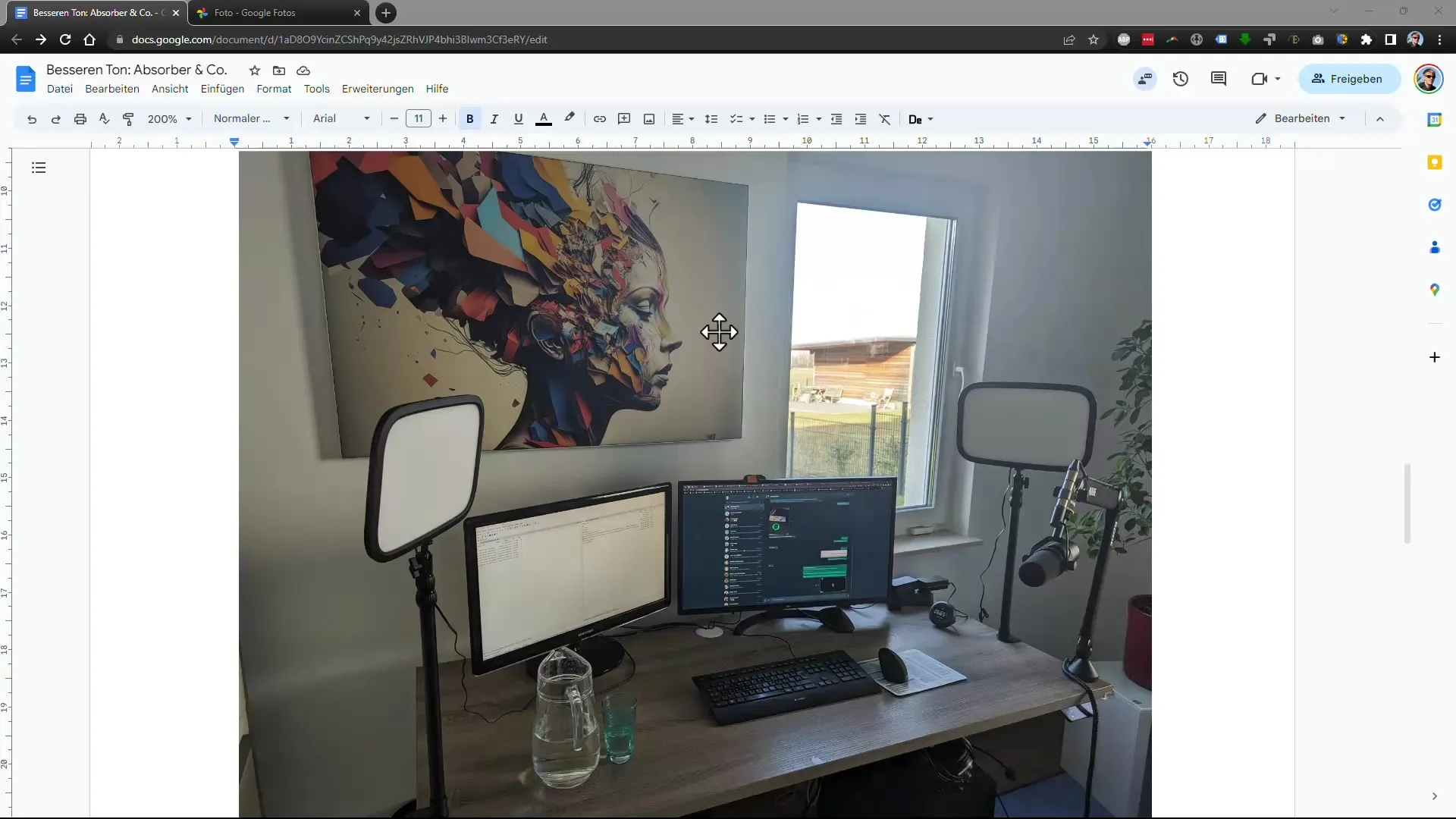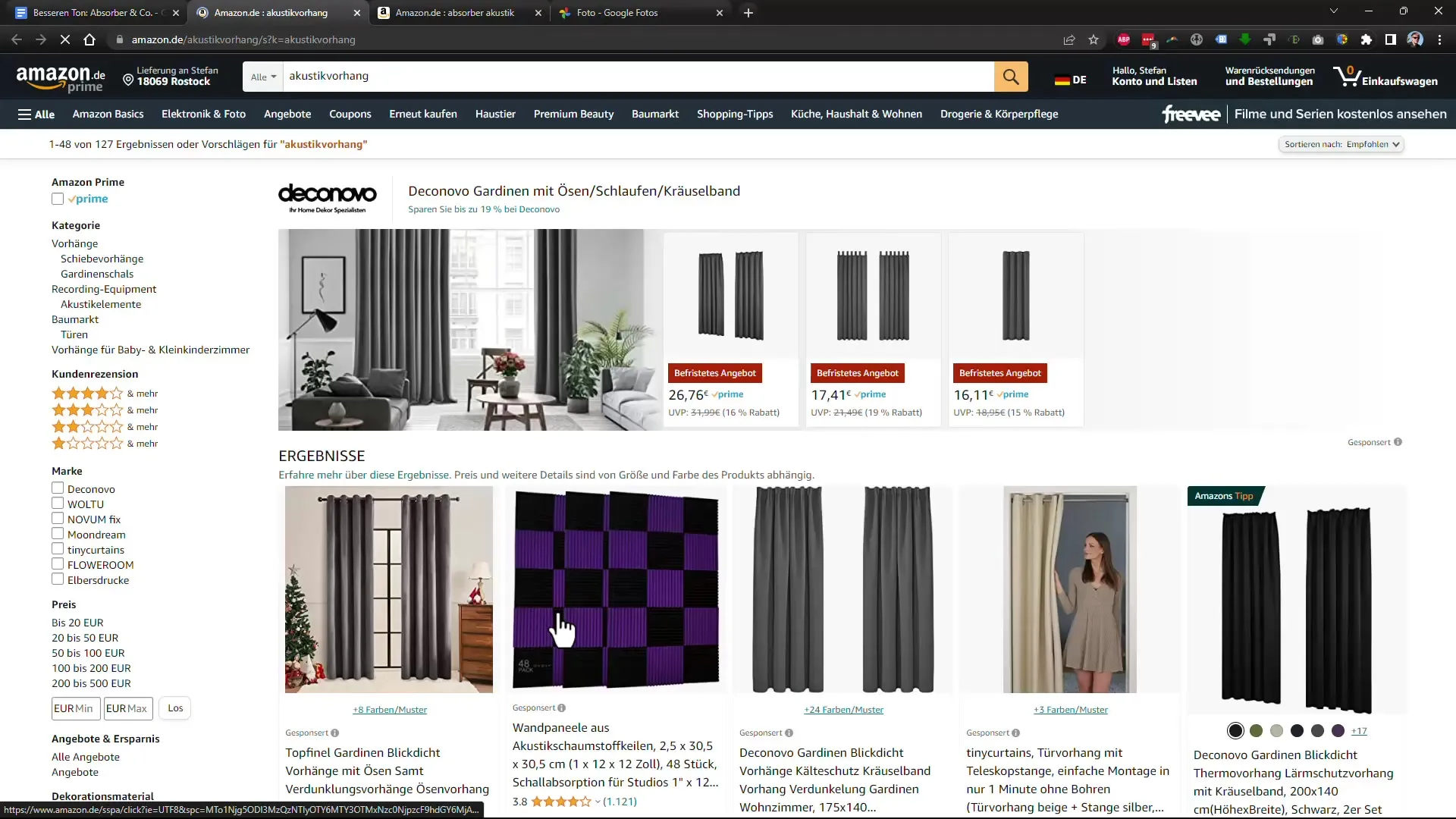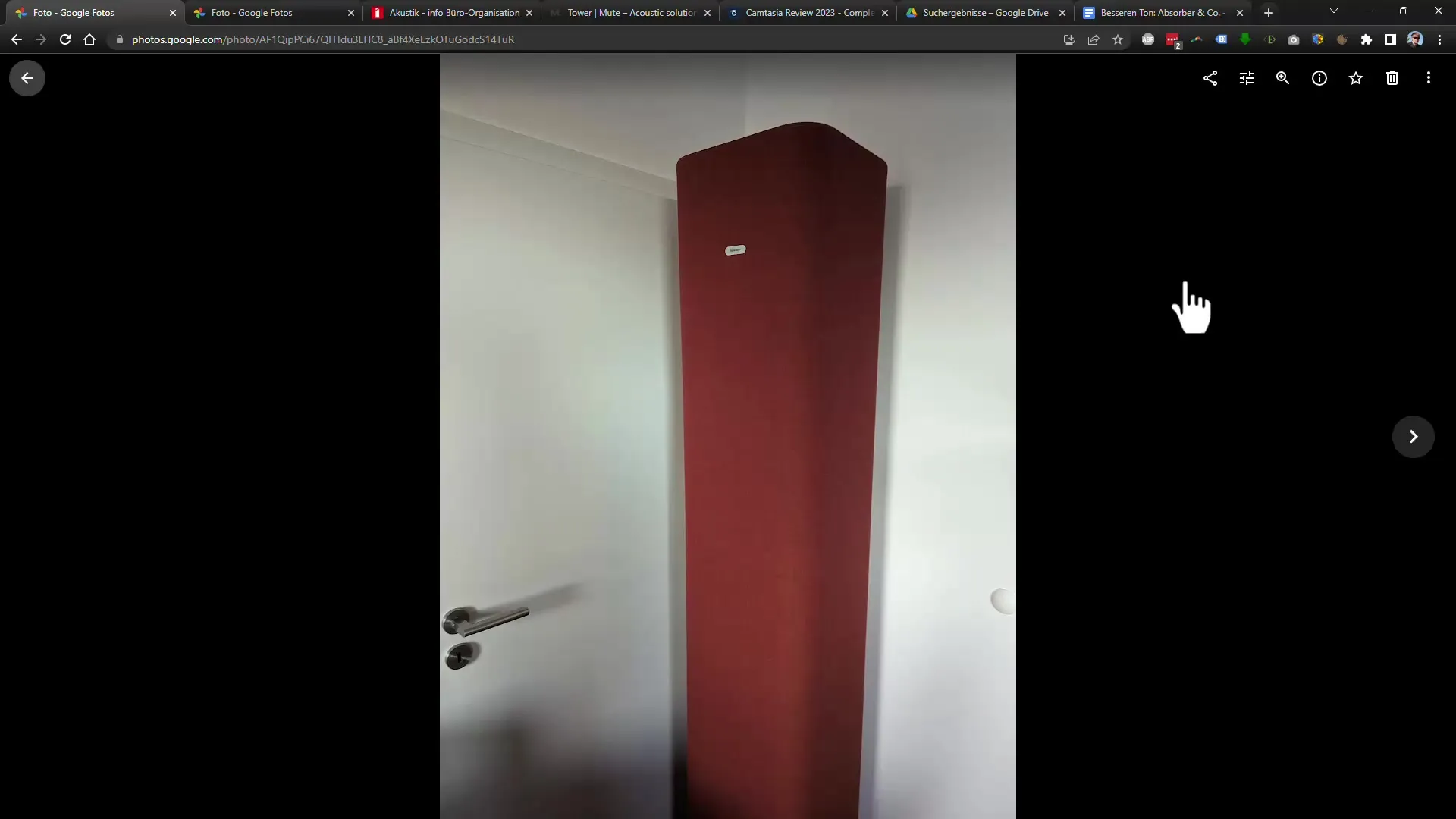In this guide, you will learn how to improve the quality of your audio recordings through targeted measures to increase sound absorption efficiency. Excessive reverberation and unwanted sources of noise can significantly impair the listening experience. By using acoustic absorbers, such as sound absorbers or specific acoustic panels, room acoustics can be optimized. This guide is based on a detailed video tutorial that explains the use and selection of various acoustic techniques.
Key Takeaways: Acoustic absorbers help reduce reverberation and noise in rooms, leading to a significant improvement in sound quality. There are various types of absorption materials that can be selected based on setup and budget.
Step-by-Step Guide
1. Basic Understanding of Acoustic Absorbers
Sound-absorbing materials are special constructions that absorb sound waves and minimize reflected noises. This allows you to reduce background noise and optimize room acoustics. In the first step, it is important to understand the different types of acoustic absorbers and their functionality.

2. Choosing the Type of Absorber
You can choose between different types of acoustic absorbers, ranging from classic foam panels often used in recording studios to visually appealing acoustic panels. Consider which design fits best in your space to meet both functional and aesthetic requirements.

3. Setting Up the Home Office
An example of setting up a home office is presented, using an acoustic panel that not only absorbs sound but also looks good. It is crucial to harmoniously integrate the absorbers into the existing room atmosphere to ensure they are not only functional but also appealing.

4. Installing Acoustic Curtains
In offices or similar spaces, acoustic curtains can be used to significantly improve the sound environment. These curtains should be thick enough to be effective and can be flexibly used to regulate the sound level as needed.

5. Testing Audio Quality
It is recommended to conduct various tests on audio quality while different absorbers are installed. An example in the tutorial describes the difference in sound quality depending on whether the curtains are drawn or not. This direct comparison is important to demonstrate the effectiveness of the absorbers used.

6. Additional Sound Reduction Measures
In addition to using curtains and panels, consider purchasing special desk absorbers. There are also more cost-effective options, such as hanging ceilings or curtains to dampen sound in a room.

7. Using Plants and Carpets
Plants also contribute to sound absorption and can be integrated as decorative elements in the room. Carpets, especially thick pile carpets, are also effective. Make sure the carpet has an appropriate thickness to achieve the desired effect.

8. Installing Corner Absorbers
A very effective method to significantly improve room acoustics is by using corner absorbers. These special absorbers are designed to reduce sound at the corners of the room, where it typically accumulates. Therefore, it is recommended not to overlook this step.

9. Acoustic Panels and Their Function
Acoustic images are an aesthetically pleasing way to defuse room acoustics. These images can be individually designed or purchased. Consider the number of images needed to achieve a significant improvement in sound reduction.

10. Conclusion and Outlook
After discussing the various techniques and tools for sound reduction, it is important to review the progress and make adjustments as necessary. Note what works best for your specific space and be prepared to take further actions if needed.

Summary – Improving Audio Recordings: Tips on Acoustic Absorbers
By taking targeted measures and choosing the right acoustic absorbers, you can significantly improve the sound quality in your space. Whether through acoustic images, curtains, plants, or special desk absorbers - each method helps to reduce echo and create a more pleasant recording environment.
Frequently Asked Questions
How do acoustic absorbers work?Acoustic absorbers are materials that absorb sound waves and reduce reflected noises.
What are the best absorbers for a home office?Especially acoustic curtains and images are recommended, as they are both functional and aesthetically pleasing.
How much do acoustic images cost?Acoustic images can vary in price depending on size and design, often starting at €300.
Do plants help against echo?Yes, plants can also contribute to sound absorption and at the same time decorate the room.
What is a corner absorber and how do you use it?Corner absorbers are special absorbers for room corners that help reduce echo by preventing sound waves from accumulating there.


